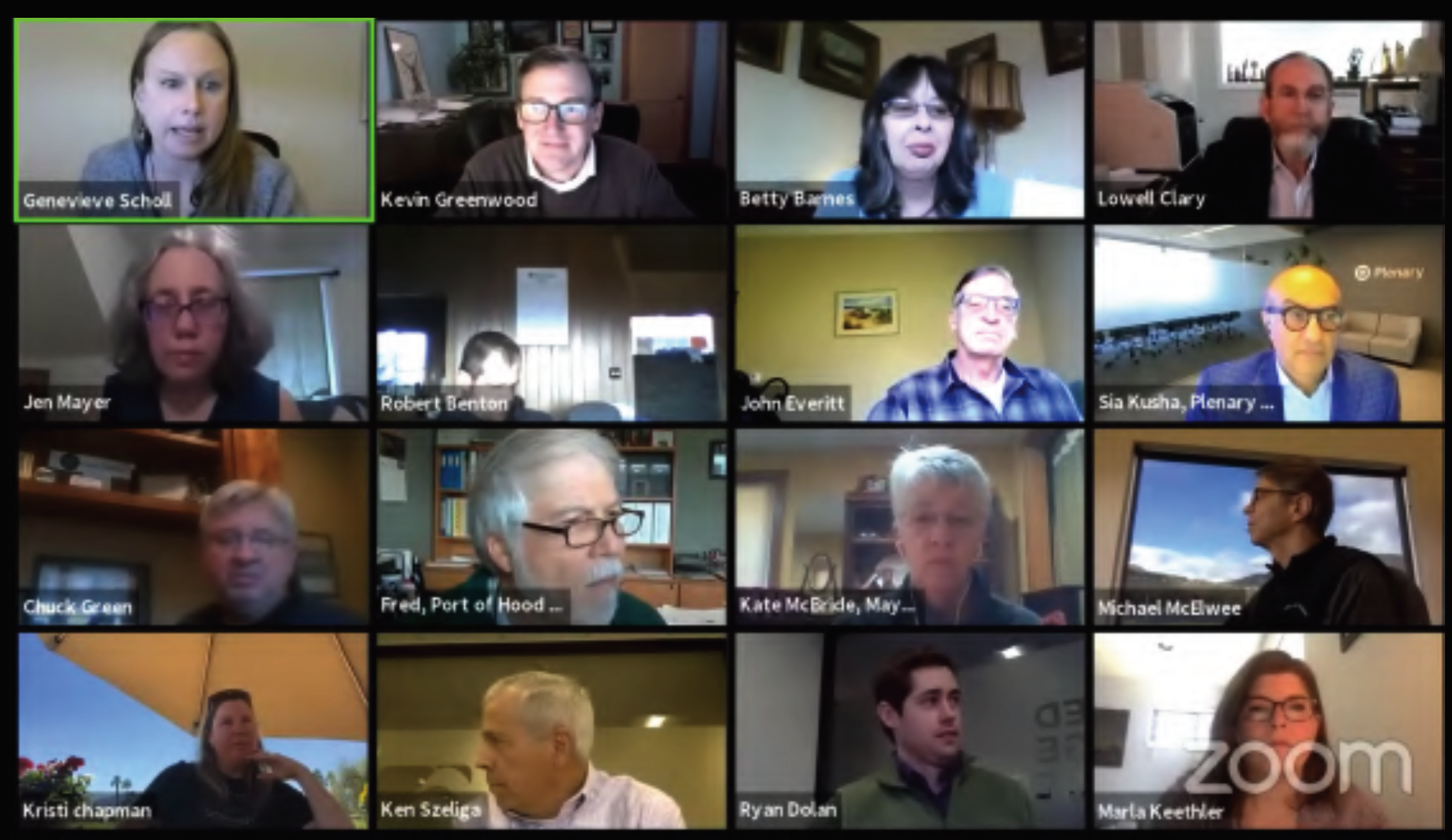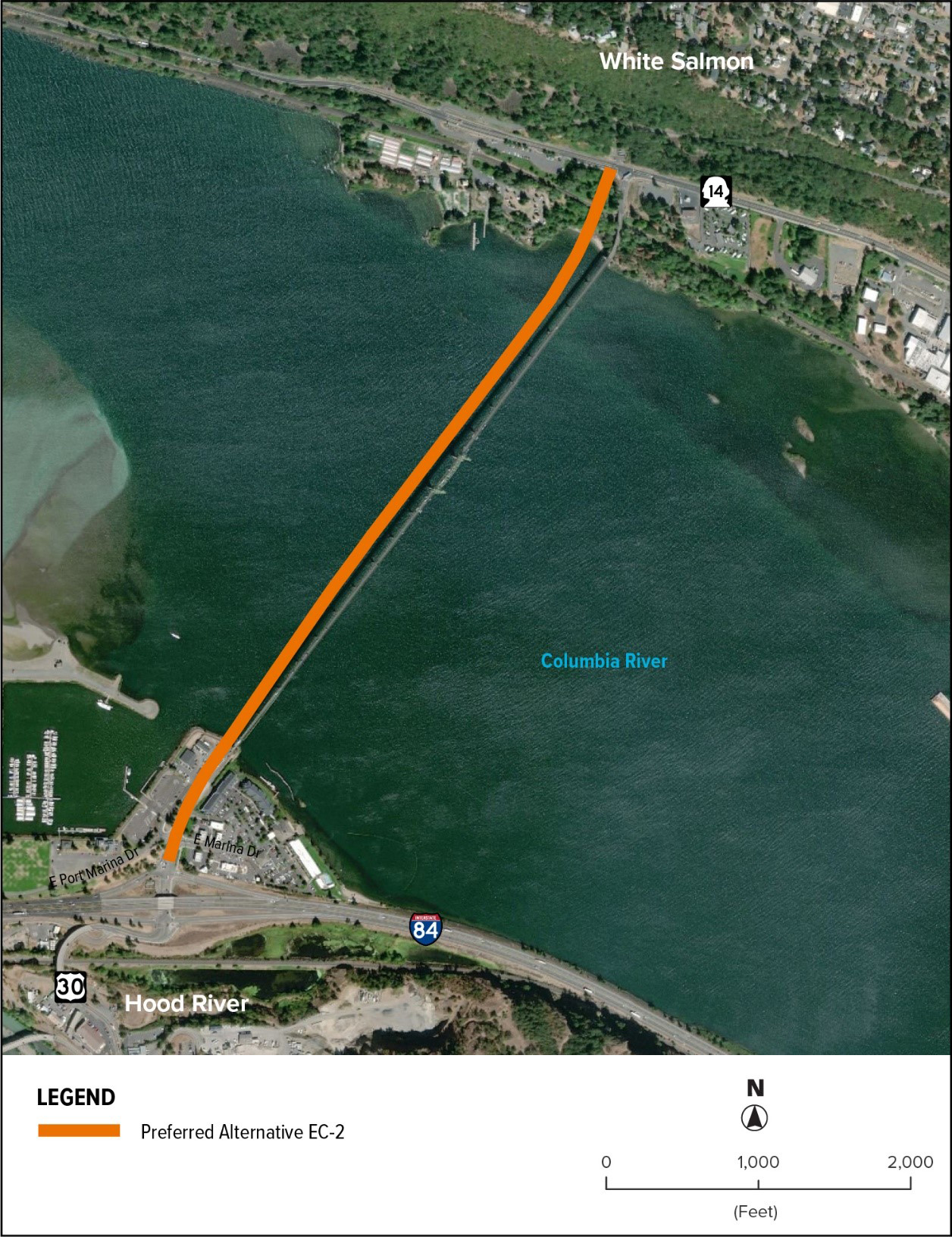Bridge Replacement Project Advances
June 7, 2021
The Bi-State Environmental Impact Statement Working Group continues to meet regularly to discuss remaining Bridge Replacement Project steps in the National Environmental Protection Act process and planning for the Final Environmental Impact Statement.
Staff from the Port of Hood River, Oregon Department of Transportation (ODOT) and Federal Highway Administration (FHWA), in partnership with the Environmental Impact Statement Working Group, advanced the design of two bridge options: the preferred alignment (Preferred Alternative EC-2) and an alternative alignment (Alternative EC-3). The Supplemental Draft EIS evaluates these two alternatives and their benefits and impacts to the community and the environment.
After publishing the Supplemental Draft EIS last November, the Port hosted a public comment period from November 20, 2020 – January 4, 2021, including a virtual Public Hearing to hear verbal comments. Comments were submitted online, by email, phone and in writing. Over 150 comments were received and will be responded to in the combined Final EIS / Record of Decision (ROD).
The EIS Working Group, made up of representatives from the cities of Hood River, White Salmon and Bingen, and Hood River and Klickitat counties and ports, confirmed consensus and support for Alternative EC-2 (see image). The FEIS / ROD initial draft has been completed with anticipated conclusion this summer or fall.

The Bi-State EIS Working Group continued to meet virtually during the pandemic.
While mostly moving along as planned, minor project delays are now expected due to archeological finds near the site. Consultation with Native American tribal representatives on cultural resources, access to the Columbia, fishing activities, treaty rights and other interests continues. Archeological resources have been identified in the project vicinity that require extensive documentation and consultation with seven tribes and the two State Historic Preservation Offices, likely delaying the FEIS/ROD for some months. Analysis of artifacts found during archeological field work has been completed and a report was submitted to tribal governments in May for a 30-day review and next steps.

Alternative EC-2 is the preferred alignment agreed upon by the Bi-State EIS Working Group.
Meanwhile, documentation of potential impacts on nearby historic properties found that a historic district is not required. As the project team prepares to conduct a geotechnical investigation this summer, Port staff and consultants continue discussions with state agencies and tribal governments regarding mitigation measures for the eventual removal of the existing bridge.
Another recent development relates to a “fully-loaded” preliminary project cost estimate that was prepared by consultant Steve Siegel this spring. This new estimate includes not only engineering, but total costs that include programming governance, financing, traffic and revenue studies. Using 2028 dollars brings the cost of bridge replacement and removal of the existing bridge somewhere between $330 – $400 million. The last estimate compiled in 2018 focused solely on engineering and construction in 2020 dollars.
